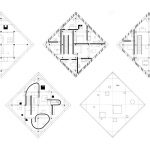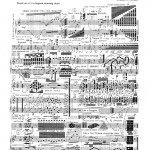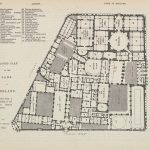The ecological relations of roots (1919) is a book by John Ernest Weaver (1884 – 1966), an American biologist and prairie ecologist. During his life, Weaver published a series of books on the relationship between plant species, their climate and the specific soils they inhabit. This book focuses on the roots of native plants in desert climates, featuring more than 140 species chosen after the examination of more than 1000 individual plants across different territories.
The text is beautifully illustrated, with detailed section drawings depicting the relationship between the plants emerging over the soil and its underneath root system. The drawings were either made from photographs or at the same time as the root was excavated featuring precise measurements.
Series of grids and scales illustrate very efficiently the varying proportions of the different species. For Weaver, one of the main aims of this publication is to understand the root distribution to ultimately find “a more intelligent solution to the ecological problems of grazing”.


In the last section of the publication, a series of photographs show the plants and their roots over a black background. While both illustrations and photos are employed for scientific purpose, they reveal an underlying aesthetic pleasure in their composition and execution.

In the introduction of the book, John Ernest Weaver thanks Miss Annie Mogensen and Mrs F. C. Jean for their assistance in drawing many of the root systems.











John Ernest Weaver, The Ecological Relations of Roots, Washington, Carnegie Institution of Washington, 1919
The book is entirely downloadable at archive.org





Dear Ms Frabrizi, I find this post most interesting. I stumbled upon the linked story on Boing Boing. I’m a hydrogeologist at the EPA and there’s this branch of environmental science called phytoremediation. That is where you use plants to remove and degrade contamination. I’m kind new to this but there are others that I’m learning from. I have forwarded this post to them. It is so interesting to actually see how extensive the root systems are. Any time you’re peering into the subsurface, its one thing to imagine the roots and another thing to actually see them. Plus, I’m nerdy about the history of science.
Thanks. Ben
Dear Ben, thanks a lot for your kind comment and interesting information. Best mb